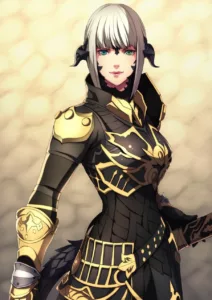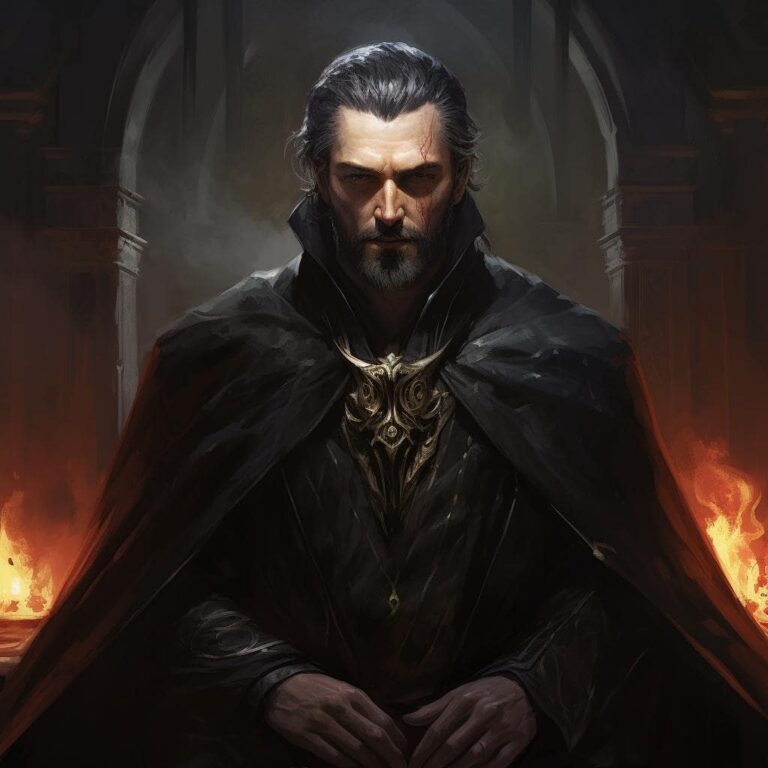
Perhaps what makes any movie or story appealing to the viewer’s eye is a superb and well-portrayed villain. Villains, in concept, are responsible for creating tensions and hype in plots that make the entire storyline interesting. It is the villains that reshape the story narratives, leading to a good and satisfying climax and resolution.
In this article, you’ll get to know more about some facts about Villains. The article will also course you on some of the best ways in choosing a perfect villain name, whether it be for your next self-title novel or game campaigns. Get to know more about the brief history of villains in the next section.
It is important to understand first where the term “villain” was first used. “Villain” was a close family to the Old French word vilain. This term is derived from the Latin word villanus which pertains to people who are born to work to till the soils of villas or plantations. In short, it is also an equivalent term for a “peasant”, “farmer”, or a “commoner”.
The term transformed later on into villein, associating it with a person of lesser status than a Knight. During this time, people who commit activities that are unknightly or unchivalrous were called villein. Unchivalrous activities include blasphemy, treachery, rape, pillaging, or any inhumane activities that they consider barbaric. The definition of the word villein worsened in the Middle Ages, as more and more people use the term to identify others with no manners and moral standards. Although the term originally refers to a peasant or villager, it has had other meanings such as a criminal or rascal.
What added more to the false definition of the term is its closeness to the English word “vile”. Vile is defined as something abhorrent or wicked. In the late 13th century, this same term was used to refer to people with flawed morality or wicked or corrupt attitudes. Modern authors adopted and reused these terms. They define an antagonist character as a “villain”, or “vile” person.
According to William Shakespeare, villains are three-dimensional characters that have complex natures. They are driven by motivation, personality, and background. A villain is said to believe that he is the hero, trying to correct things or trying to do the right thing from his perspective. Or he or she is someone who is driven to do an evil deed in pursuit of the greater good. This perspective of Shakespeare for villains is followed by modern authors and writers. It gives richer content to the story which not only focuses on the protagonist’s view but also considers the exact polar opposite viewpoint of the villain.
Many different types of villains are now created and considered by writers today. Below are some of the common villain types seen in novels, series, and movies.

An Anti-Villain is a character who sees themselves to be the bearer of a noble cause. They have a noble belief and a virtuous goal but their means of achieving them are downright towards the path of evil. The best example is Thanos from Marvel’s Cinematic Universe whose goal is to depopulate half of the entire universe in hopes of restoring order and replenishing the natural resources of planets.
Classic Villains are straightforward evil characters that exist to oppose the protagonist of the story. These type of villains is the most basic and is often two-dimensional. They do evil simply because they are evil and with no deeper motivation behind their deeds. Unlike other types of villains, classic villains are considered to be static and would often bore readers or viewers. The best example is The Riddler from the Batman comic book. He is a criminal-minded person who is obsessed with riddles and puzzles. Like a classic villain, he wants to prove his intellect against Batman and the authorities—a rather dull and inanimate motivation for a villain.
A Beast villain type is motivated by primal instincts or a bestial attitude. This type of villain is commonly seen in sci-fi or morbid horror films where a beast ravages a group of protagonists. The most common plot endings for these stories are the death of the beast or monsters. Examples of beast villains are Godzilla, Sharks from the Jaw movie, and Jurassic Park.
The Authority Villain is a type of villain who is driven by power and prestige. This type of villain is often seen in stories involving political power plays and thrillers. The common motivation of an authority figure is domination or control over a certain area, while the protagonists’ main direction is to stop the villain from achieving this goal. The most common example is President Snow from The Hunger Games series.
One of the broad and more complex types of villains is a Disturbed villain. Disturbed villains are once normal characters who encountered psychological problems, traumatic experiences, or mental struggles. These villains become complex because they have a duality, commonly a neutral or good side, and a horrific and evil side. The best example of a disturbed villain is The Joker from the Batman comics and the standalone movie.
Part of an author’s duty is to formulate names suitable for his or her character in their story. Aside from the protagonist or main character, the villain’s name should have an impact on the overall story you are trying to create. Villain names do not need to be horrific always. A good villain name needs to be simple yet memorable because of the character and how well the villain is portrayed. In this section, we will give you some of the important tips in choosing the best villain name.
An online name generator is the fastest and the most convenient way to pool ideas for your next villain name. Name generators are AI-generated, self-suggesting tools that you can use to generate random name ideas depending on the subject you choose. A simple search over an internet browser for a villain name generator is all you need to find one. Do take note that there are many name generator tools available online, so find the best villain name generator that fits your standard and liking.
In cases where name generators are out of the options, we can still formulate and name a villain on our own. The best starting point for this step is to predefine the villain character. Predefining your character includes identifying how the villain is perceived, its background story, and determining its villain type for the character. For example, if you want a tyrannical villain, with an obsession for power and knowledge, you can use titles that directly describe these such as The Conqueror, The Invader, or The Destroyer. Then add a suitable name that sounds viscous and tyrannical.
After you predefine your villain’s characteristics, you can formulate a good name for a villain by simply relating their name to villainy. Negative terms like immorality, sinful, fiendish, perversion, iniquity, and debauchery are good starting points to derive a villain name.
For example, you can derive the names Sindra and Sinder from the word sinful. De’vakal is derived from debauchery and is a good villain name for a demon. Continue researching for more villainy words and try to derive as many names out of them as you find the perfect name you prefer.
Villains also have aliases to cover their real identities, just like the heroes of your stories. Villain aliases are also a good way to formulate names without exerting extra effort to create newer, nonexistent names. For example, if the villain is a blood-hungry vampire, we can call them “Leech” or “Bloodhound”. Their real name can simply be Johnny or Andrew when they are inactive from their villain activities. Another example is Dr. Curtis Connors from the Spiderman series, whose villain name alias is Lizard.
The term “Villains” is a generic term about people or groups of people in a story that opposes the protagonists. They are the main opponents of the heroes that we often see in comic books, novels, and other literary works. While the term “villains” is used as a generic term, the term “supervillains” are much more particular to villains with extraordinary abilities. They are the exact opposite of Superheroes, a term used to describe heroes with superpowers.
Supervillains possess incredible powers, skills, or abilities that are on par, or sometimes greater, than the superhero. They are the biggest threat to the protagonist and can exhaust millions of lives if left unchallenged. Supervillains are often seen and portrayed in superhero comic books from Marvel and DC Comics. They are also common in Japanese Anime and Manga (Japanese Comics). One of the iconic supervillains in Anime is Cell from the series Dragon Ball Z.
